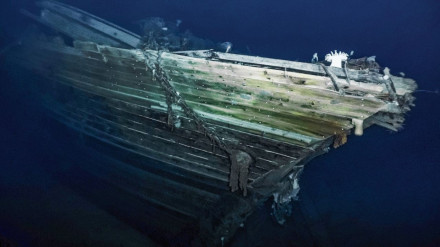History
The ship was built originally for tourist cruises in the Arctic by a partnership between Lars Christensen, a Norwegian ship owner and the Belgian Adrien de Gerlache, leader of the Belgian Antarctic expedition in 1897-99, and called the Polaris. When the Arctic tour scheme she had been built for collapsed as Adrien de Gerlache was unable to pay his share on the completion of the ship in summer 1913. At the same time Shackleton was in search of an expedition ship for the Imperial Trans-Antarctic Expedition. The Polaris was purchased for £11,600 (225,000 Kroner) and renamed The Endurance.
The Endurance sailed for Antarctica from Plymouth on the 8th of August 1914. Shackleton was not on board as he still had matters to attend to at home. He left from Liverpool on a mail boat the Urugayo around the 26th of September to join the Endurance in Buenos Aires, from where she departed with Shackleton on the 26th of October.

Ernest Shackleton's ship the Endurance is most famous for not making it to the edge of the Antarctic continent in the Weddell Sea and instead being caught in the sea-ice and eventually being crushed, sinking hundreds of miles from land, the outside world knew nothing of these events until Shackleton himself escaped and brought about rescue of his companions.
Description
Built: Framnaes Mek, Verstad, Sandefjord, Norway 1912.
Owner: Imperial Trans-Antarctic Expedition

The Endurance in the Antartic winter darkness
| Master | Shackleton |
|---|---|
| People on board | 28 |
| Length | 144 feet (43.9 m) |
| Width | 24 ½ feet (7.5 m) |
| Tonnage | 300 ton |
Status
Discovery of the wreck
On the south western side of Elephant Island at Stinker Point, is a place called Wreck Bay, where there is some wreckage from a ship. In 1998 these remains were recognized as being probable flotsam from Shackleton's Endurance.

In 2022 the wreck of The Endurance is discovered by a team of researchers from the Falklands Maritime Heritage Trust / National Geographic.
The first images of the ship were transmitted via autonomous underwater vehicles (AUVs) from nearly two miles down on March 5. As the camera glides over the wooden deck of the ship, video captures century-old ropes, tools, portholes, railings—even the masts and helm—all in nearly pristine condition due to cold temperatures, the absence of light, and low oxygen in the watery resting place. See more
References
- NRC.
- Cool Antartica.
The Endurance - Ships of the Polar Explorers. - National Geographic.
hackleton’s legendary ship is finally found off the Antarctic Coast, a century later.